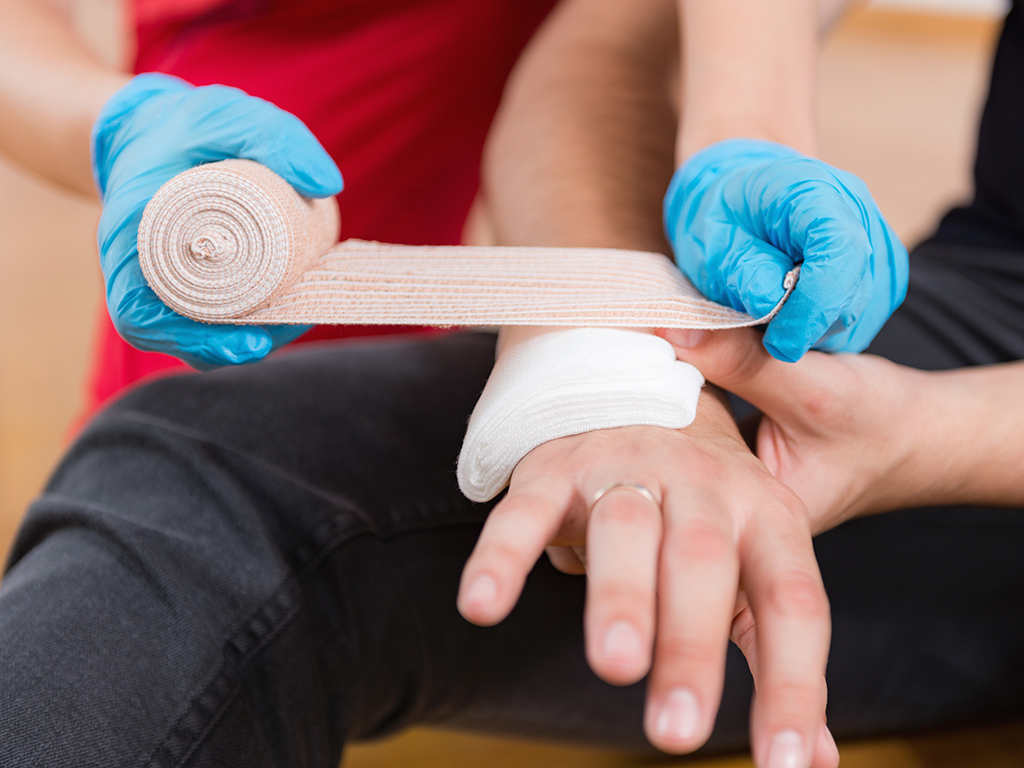
What is first aid?
First aid covers the steps taken to help a person in the first minutes of an illness or injury.
Accidents or illness can happen to anyone at any time, whether at home, at work or at school.
First aid may:
- ease someone’s pain or discomfort
- help them recover more quickly
- save a life
First aid may be useful in many different situations, such as when dealing with:
- bites and stings from plants, insects, spiders, snakes, sea creatures and other animals
- allergic reactions and anaphylaxis
- burns, including chemical burns and electrical shocks
- injuries such as eye injuries, sprains, broken bones and wounds
- poisoning and swallowed objects or substances
Why learn first aid?
If you learn the basics of first aid, you might one day save the life of a loved one, colleague or stranger.
First aid might involve a simple action, such as placing a person in the correct position so that they can breathe freely.
It might involve a more skilled activity, such as cardiopulmonary resuscitation (CPR) if they have stopped breathing.
It could also involve using an adrenaline autoinjector, such as an EpiPen, if they are having an allergic reaction. Some situations require specific first aid.
Some situations can be treated with first aid alone. Other times you may need help from your doctor or hospital emergency department. If there is an emergency, you should call triple zero. The triple zero phone operator can give you specific first aid advice for your situation. You can do first aid until the ambulance arrives.
You can also get first aid advice from the Australian Red Cross First Aid app.
The DRSABCD action plan
If you have completed a first aid course, you will be familiar with the DRSABCD action plan. You can remember them by thinking “Doctor’s ABCD” (for DRS ABCD).
Each letter is a prompt for the actions to take when first aid is needed.
| Letter | Representing | What to do |
|---|---|---|
| D | Danger | Ensure that the patient and everyone in the area is safe. Do not put yourself or others at risk. Remove the danger or the patient. |
| R | Response | Look for a response from the patient — loudly ask their name or squeeze their shoulder. |
| S | Send for help | If there is no response, phone triple zero (000) or ask another person to call. Do not leave the patient. |
| A | Airway | Check their mouth and throat are clear. If there is foreign material, roll the patient on their side and clear their airway. If there is no foreign material, leave them in the position you found them in. Gently tilt their head back and lift their chin to clear their airway. |
| B | Breathing | Check if the person is breathing abnormally or not breathing at all after 10 seconds. If they are breathing normally, place them in the recovery position and stay with them. If they are not breathing normally, call an ambulance and start CPR. |
| C | CPR | Start CPR: 30 chest compressions followed by 2 breaths. Continue CPR until the patient starts breathing or until help arrives. |
| D | Defibrillation | As soon as possible, attach an Automated External Defibrillator (AED) to the patient. Follow the voice prompts. Do not leave the patient alone to fetch the defibrillator — let someone else bring it. |
The DRSABCD action plan is a useful tool in first aid. But you will manage even better if you have training in how to perform each action.
Where to learn first aid
If you want to learn first aid, there are plenty of courses available. Different courses run for different lengths of time, and can be run:
- publicly
- at a chosen venue, such as your place of work
- online
Organisations that offer courses and certificates in first aid and CPR include:
- Royal Life Saving Society – Australia
- Australian Red Cross
- CareFlight
You may also get your own first aid kits for your home and car.


